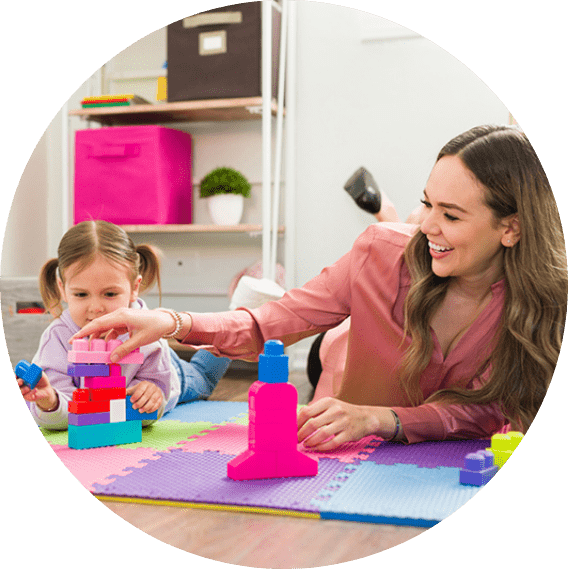Thanksgiving is a time to come together with family and friends. A time to enjoy a delicious meal and share your gratitude for all the good things in your life. For parents with a child on the autism spectrum, Thanksgiving can be filled with extra stress.
Children with autism most often prefer structure and routine. Many are picky eaters and sensitive to different sensory experiences. To help make your Thanksgiving an enjoyable experience for the entire family here are our 12 tips for an autism-friendly Thanksgiving.
1. Talk to Your Child About Thanksgiving
Children on the autism spectrum like structure and routine. They like knowing what is going on and what to expect. To help prepare your child with autism for Thanksgiving make sure to talk to them about the day. Explain to them what Thanksgiving is and what the day will look like for them.
Try to give them a schedule for the day so they will have an idea of what to expect and talk to them about where you will be going (if you won’t be having Thanksgiving at home). Make sure to also talk about everyone who will be attending. If you can you may want to show them pictures of the foods you will be enjoying and the people who will be attending. The more details and information you can give your child the better.
2. Talk to Your Family About Autism
Take the time to talk to your family in advance about your child’s autism. Grandparents, aunts, uncles, and cousins who don’t live with your child or see them frequently may not fully understand your child’s needs and sensitivities. Take some time before Thanksgiving Day to talk to your loved ones you will be celebrating with all about your child’s unique needs.
3. Practice Thanksgiving with Your Child
Thanksgiving may have some new traditions that your child may not yet be familiar with. Think about the things that normally happen on Thanksgiving for your family and spend some time practicing those things with your child. Depending on your own family traditions some things you may want to consider practicing include:
- Eating at the table
- Passing food
- Taking turns giving thanks
- Greeting and saying goodbye to people
If you have the time, it is also a good idea to try to introduce your child to some new traditional Thanksgiving Day food items. This will give them a chance to try new things before the big day.
4. Dress Comfortably
Some families like to dress up on Thanksgiving, but that could be an extra challenge for your child on top of all the other changes they already will have to face for the day. Rather than putting your child in fancy and uncomfortable clothes, allow them to dress more comfortably in clothes that they like and usually wear.
5. Arrive Early
If you will be spending Thanksgiving at a friend or family member’s home try to arrive early before the other guests have arrived. Arriving first will give your child a chance to get familiar with the new environment and they will be able to slowly acclimate as people arrive.
6. Have a Plan for Noise
Thanksgiving can be a very noisy day and for a child with sensory sensitivities, those sounds can be even more overwhelming. Between banging pots while the family cooks, different conversations in different rooms, television or music in the background, and more, your child could easily become overwhelmed.
Plan for this noise in advance. Consider asking your family to try to keep the noise level down by talking softer and possibly eliminating unnecessary background noise like music or an unwatched TV. It is also a good idea to bring along some noise-canceling headphones for your child.
7. Create a Safe and/or Quiet Space
Even though you’ve prepared for the noise of the day, it’s still a good idea to create a safe space for your child to escape to during the day whenever they are feeling overwhelmed or just need a break. This can be a room or corner of a room depending on where you are at and what is available. Make sure your child knows where their safe space is and place in the space your child’s favorite toys, gadgets, and anything else they may need to self-regulate and recharge.
8. Activities & Entertainment
Thanksgiving may not be the most exciting day for a child. The day can be long and there is a lot of downtime. Make sure your child has plenty of ways to stay entertained during the day. Charge the tablet, bring headphones, books and games, anything you think may help keep your child entertained throughout the day.
9. Familiar Foods & Snacks
Most people don’t eat things like roast turkey, cranberry sauce, and stuffing regularly outside of Thanksgiving. Many children with autism may struggle with new foods, have some food sensitivities and allergies, or may be picky eaters. To make sure your child has enough to eat on Thanksgiving, it is a good idea to have familiar foods and snacks on hand that you know they will eat and enjoy.
10. Try to Keep a Routine
Traveling, family visits, and big holiday meals. It can be hard to keep your child’s routine during the holiday season, but the more you can the better. Try to wake your child up at their regular time and maintain their breakfast routine. If they take naps, try to keep their nap schedule the same, and try to maintain their bedtime routine.
11. Watch Out for Sensory Overload & Meltdowns
No matter how well you prepare, things can still happen. Continue to check in with your child throughout the day to see how they are doing. Also, be on the lookout for any signs of sensory overload or a potential meltdown.
Before the big day, be sure to come up with a game plan should your child have a meltdown.
12. Make Your Own Rules
Thanksgiving is a time to give thanks for the people in your life, but not everyone’s Thanksgiving looks the same. So don’t compare your child and your family to the stereotypical Thanksgiving celebrations you see advertised. It’s okay if your family does things differently. You get to make your own Turkey Day rules and family traditions to meet the needs of your neurodiverse family.
For more holiday tips be sure to check out our blog post “Neurodiverse Family Gatherings: How to Make Your Holidays More Accessible.”




